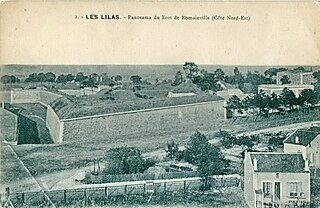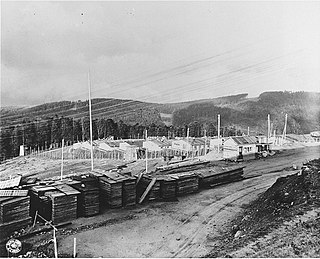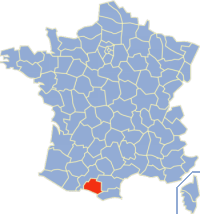 W
WBeaune-la-Rolande internment camp was an internment and transit camp for Jews, operated by the French Police under Nazi supervision, located in Beaune-la-Rolande, north of the Demarcation line of occupied France during World War II.
 W
WThe Camp de Rivesaltes, also known as Camp Maréchal Joffre, was a military camp in the commune of Rivesaltes nearby Perpignan in the department of Pyrénées-Orientales in the South of France. The camp was also used to detain civil populations several times between 1939 and 2007. Its darkest period was in 1942, when 2,251 Jews, including 110 children, were transferred from Rivesaltes via the Drancy internment camp to the Nazi extermination camp Auschwitz, where they were murdered.
 W
WThe Camp des Milles was a French internment camp, opened in September 1939, in a former tile factory near the village of Les Milles, part of the commune of Aix-en-Provence (Bouches-du-Rhône). In October 2015, the site was chosen by UNESCO as the headquarters for its new Chair of Education for Citizenship, Human Sciences and Shared Memories.
 W
WThe Royallieu-Compiègne was an internment and deportation camp located in the north of France in the city of Compiègne, open from June 1941 to August 1944. French resistance fighters and Jews were among some of the prisoners held in this camp. It is estimated that around 40,000 people were deported from the Royallieu-Compiègne camp to other camps in the German territory of the time.
 W
WFort de Romainville, was built in France in the 1830s and was used as a Nazi concentration camp in World War II.
 W
WThe Mérignac internment camp, also known as the Beau-Désert internment camp, was a French internment and transit camp for Roma, Jews, French members of the Resistance, and political prisoners; it was located in the district of Beau-Désert in the commune of Mérignac, near Bordeaux, in German occupied France during World War II.
 W
WNatzweiler-Struthof was a Nazi concentration camp located in the Vosges Mountains close to the villages of Natzweiler and Struthof in the Gau Baden-Alsace of Germany, on territory annexed from France on a de facto basis in 1940. It operated from 21 May 1941 to September 1944, and was the only concentration camp established by the Germans in the territory of pre-war France. The camp was located in a heavily-forested and isolated area at an elevation of 800 metres (2,600 ft).
 W
WPithiviers internment camp during the Holocaust was a transit camp for Jewish deportees in Pithiviers in Occupied France during the Second World War. Children were separated there from their parents; the adults were processed and deported to concentration camps farther away, usually Auschwitz. This was the fate of the novelist Irène Némirovsky.
 W
WLe Vernet Internment Camp, or Camp Vernet, was a concentration camp in Le Vernet, Ariège, near Pamiers, in the French Pyrenees. Built in 1918 as a barracks but after WWI used as an internment camp for prisoners of war. From February 1939 to June 1944, it was used as an internment camp, first for Republican refugees fleeing Spain after Franco's victory in the Spanish Civil War, in particular some 12,000 refugees, including soldiers of Durruti Column and others of the International Brigades, under the legitimate French government and then, as of May-June 1940, under the Vichy government after German occupation during the Second World War. Starting in 1940, apart from the prisoners coming from the Spanish Civil War, the Vichy government used it to house prisoners considered suspect or dangerous to the government, including members of the resistance and opponents of the Hitler, Mussolini and Pétain regimes. From 1942 until June 1944, it was used as a holding camp for Jewish families awaiting deportation to other camps. The last transport out of the camp in June 1944 took the prisoners to Dachau concentration camp.